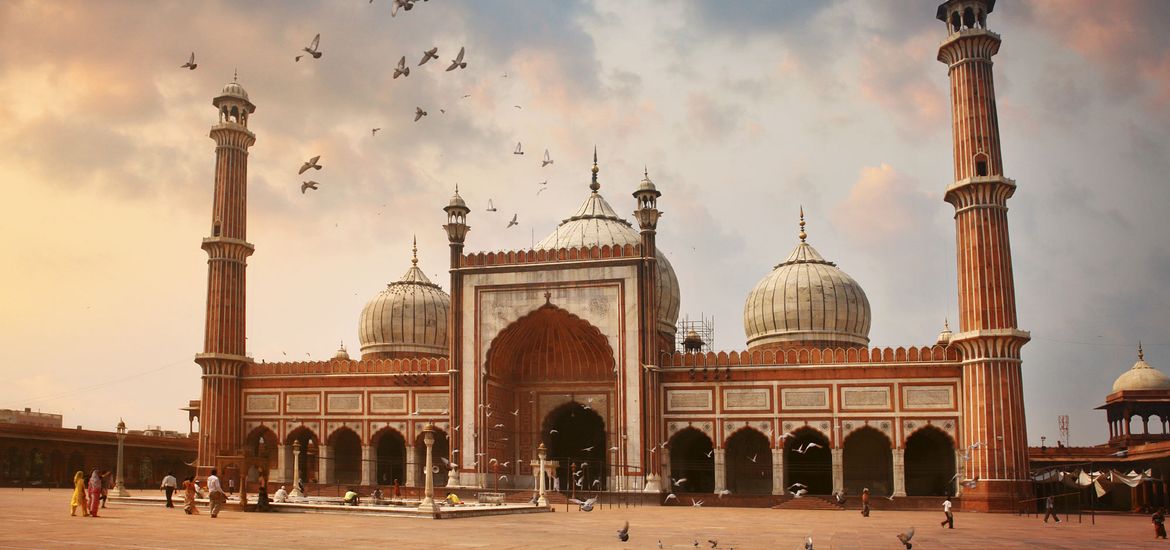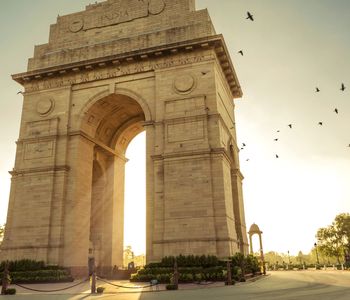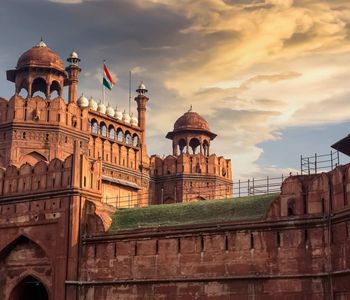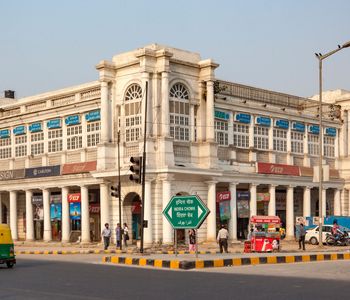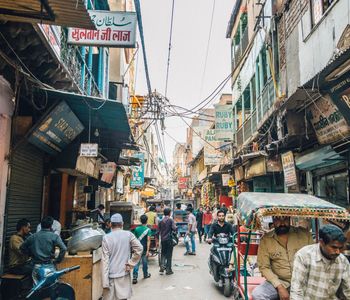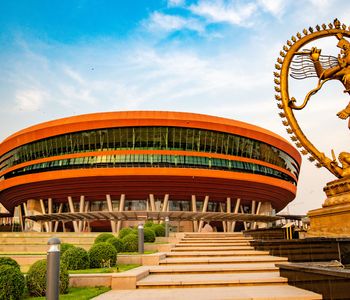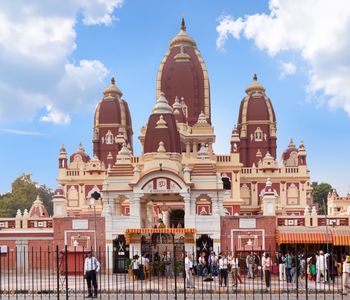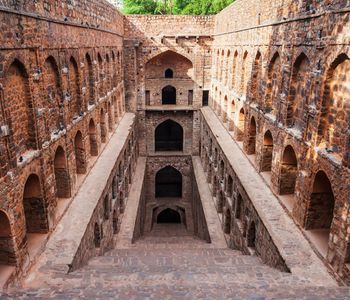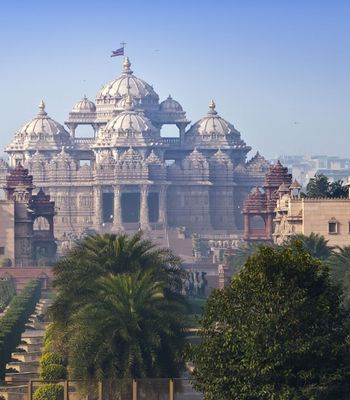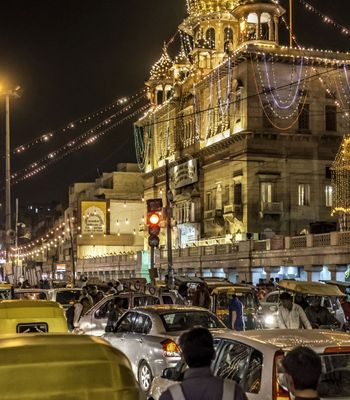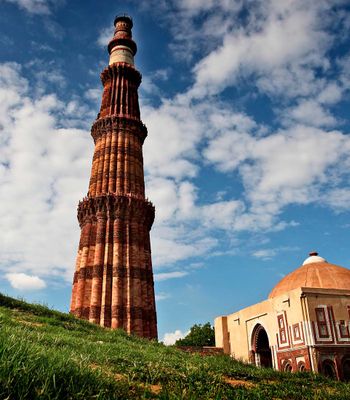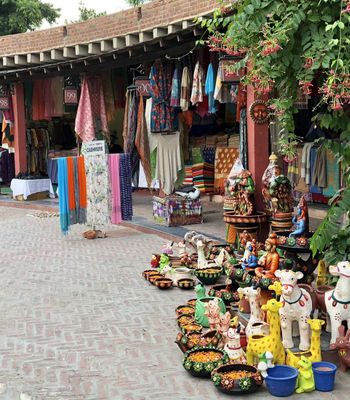As the second largest mosque in India, Jama Masjid welcomes up to 25,000 followers in its courtyard for weekly prayers. Also referred to as the "Friday mosque," this structure is near the popular Red Fort complex. When you visit Old Delhi, this mosque stands out with its red sandstone and white marble construction. Explore Jama Masjid's history and features so that you can add this mosque to your travel itinerary.
Expanding on its Royal History
In total, it took 12 years to construct the Jama Masjid. Starting in 1644, 5,000 workers descended on this site to construct this mosque conceived by Shah Jahan. Upon its completion, Jama Masjid and the Red Fort were reflections of the 5th Mughal Emperor's vision for a strong India.
For a construction cost of one million rupees, Jama Masjid offered a place where both royalty and everyday people could worship. During this Emperor's reign, each gate offered entry for specific people. In general, nobles entered the Northern gate, common people used the Southern gate and the Emperor exclusively entered the Eastern gate.
Luckily, the mosque continues as a landmark and cultural center in India today. Although the British wanted to destroy it after the 1857 Revolt, the Indian people were able to save it from any alterations. Worshiping among locals and visitors alike is now a daily occurrence at Jama Masjid.
Looking at its Fascinating Design and Architecture
Jama Masjid sits about 30 steps higher than the surrounding city, which makes the mosque a focal point. Because of its view from the elevated courtyard, worshipers can look out over the city and to the horizon behind it. With nearly 900 marked spaces for worshipers and a checkerboard color scheme, Jama Masjid has a design built for mass praying.
As a single structure, Jama Masjid is one of the most intricately designed mosques in the world today. Altogether, this landmark has these features, such as:
- Three marble domes
- Two tall minarets
- Three arched gates
- Four towers
Overall, the designers used red sandstone and some white marble to create nearly every corner of the structure. With arches, motifs and floral accents adding to the design's character, Jama Masjid is a lesson in religion and architectural design.
Enjoying its Praying Reprieve
Practicing Muslims are welcome to pray at Jama Masjid. Generally, there are multiple courtyards and a prayer hall for daily worshiping. Because the eastern gateway opens up to the largest courtyard, this section is often the busiest. With space available for thousands of worshipers, it's also one of the most immersive areas for Muslims.
Alternatively, explore the courtyards just inside the southern and northern ends of Jama Masjid. In truth, they offer a slightly more private space for praying. Also, praying indoors is possible as you seek out the prayer hall. With 18,000 square feet of interior space, the hall inspires believers with its triple-dome structure carved from marble.
Because Jama Masjid faces the holy city of Mecca, Saudi Arabia, praying at this location is highly revered. As a visitor, be respectful of everyone's space as prayers occur throughout the day.
Preparing for a Visit
Jama Masjid offers free visiting hours from 7:00 a.m. to 12 noon and 1:30 p.m. to 6:30 p.m. However, the mosque does close throughout these hours for prayer. In general, only practicing Muslims can participate in prayer.
In Islam, prayer occurs at slightly different times each day, but they always pray at least five times daily. For example, a prayer schedule might look similar to this pattern, such as:
- Fajr 5:51 a.m.
- Sunrise 7:15 a.m.
- Dhuhr 12:27 p.m.
- Asr 3:21 p.m.
- Maghrib 5:40 p.m.
- Isha 7:04 p.m.
Also, any visit requires the proper attire. Preferably, wear clothing that covers the head, shoulders and legs. For your convenience, robes are available for rent. With this attire for your visit, you can immerse yourself in this cultural experience.
As a prayer refuge for its followers, Jama Masjid is open 365 days a year. With careful planning, you can enjoy this mosque and nearby landmarks, including the Red Fort. Ultimately, Jama Masjid gives you a chance to reflect on life and your beliefs as you travel through Old Delhi.
